Abstract
1. In foetal lambs, delivered by Caesarean section under light chloralose anaesthesia, injection of sodium cyanide into the left atrium or ascending aorta caused a rise of arterial pressure and femoral vasoconstriction. The response to 0·77 mg/kg was barely present at 0·6 of term; by 0·8 of term there was a large response to one third of this dose.
2. The cardiovascular response to cyanide injection into the left atrium or ascending aorta was diminished either by section of the vagi or by carotid denervation, and was abolished by cutting both sets of nerves.
3. Injection of sodium cyanide into both common carotids simultaneously caused a substantial cardiovascular response and often a respiratory effort, abolished by carotid denervation, whereas injection into a single carotid rarely caused an effect.
4. It is concluded that the carotid chemoreceptors in mature foetal lambs can be excited by a stimulus of sufficient intensity, even though they do not respond to moderate hypoxaemia.
Full text
PDF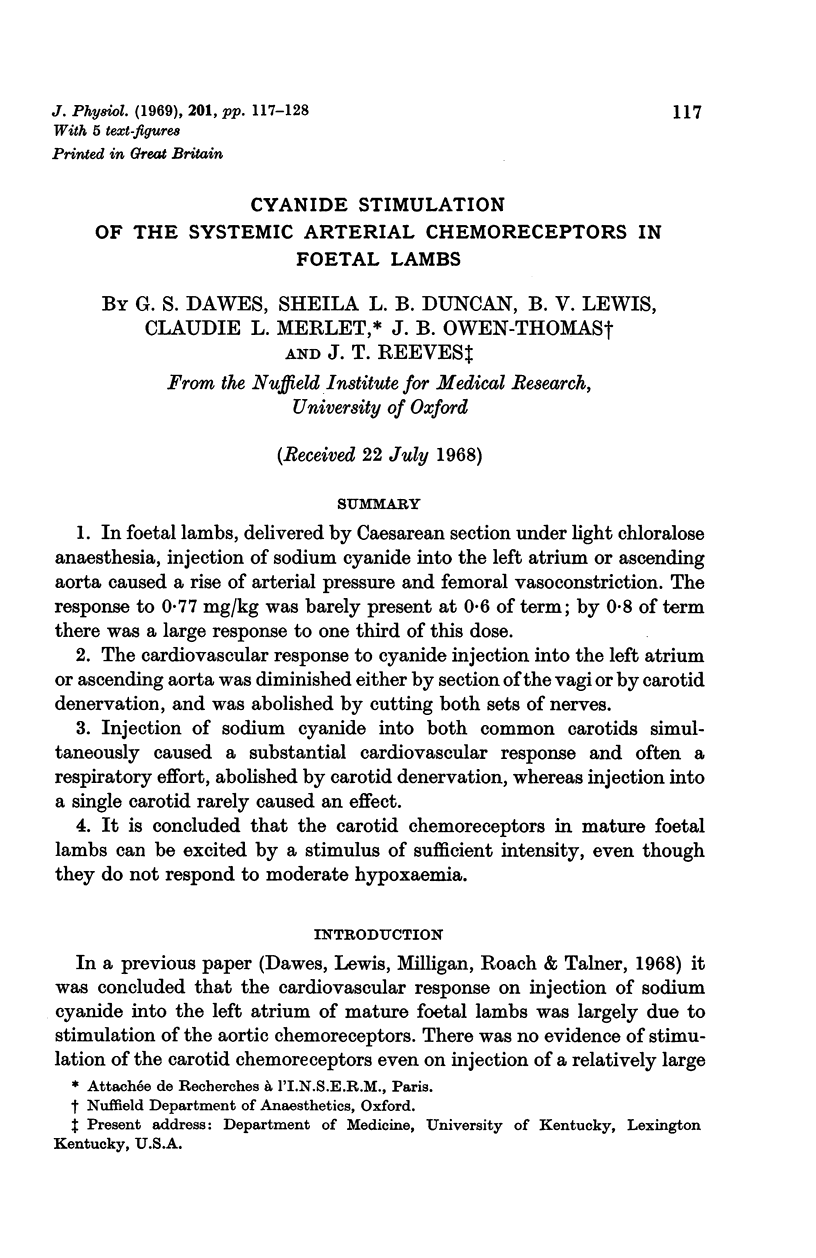
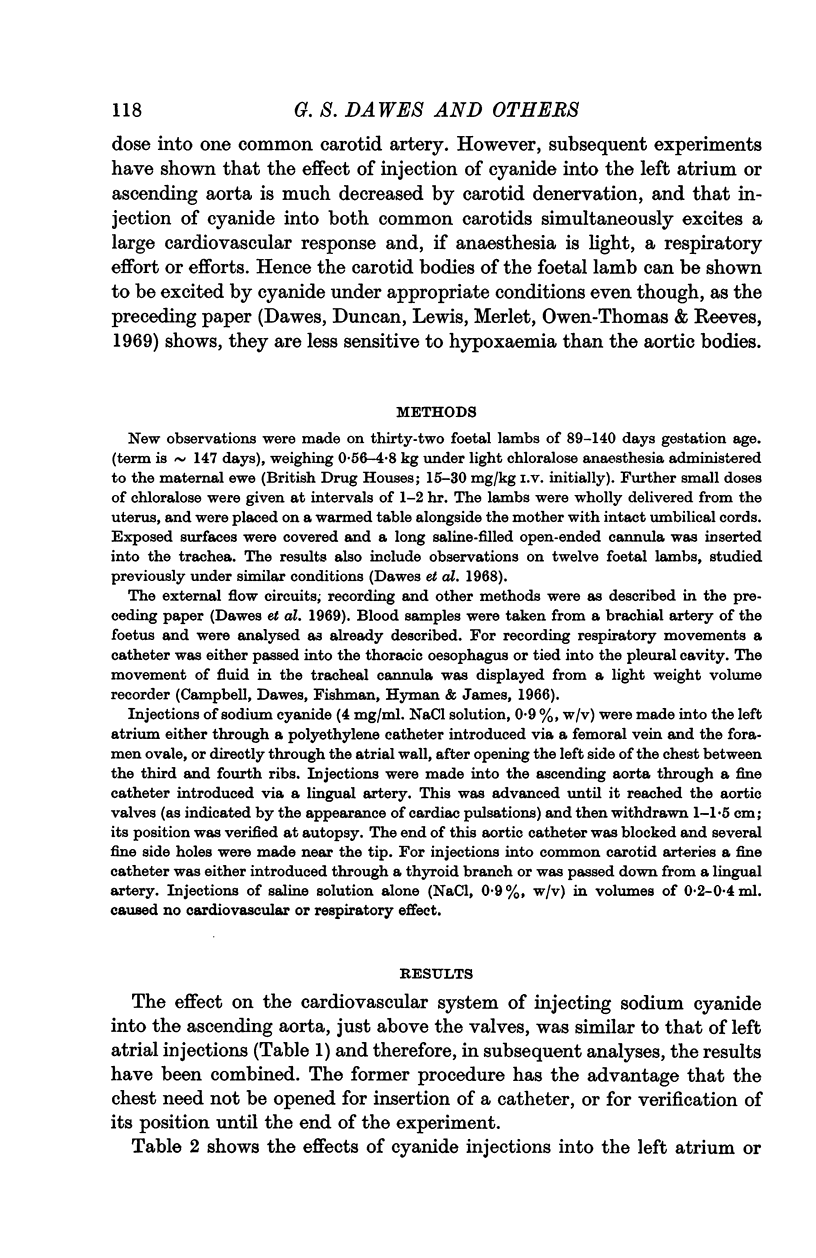
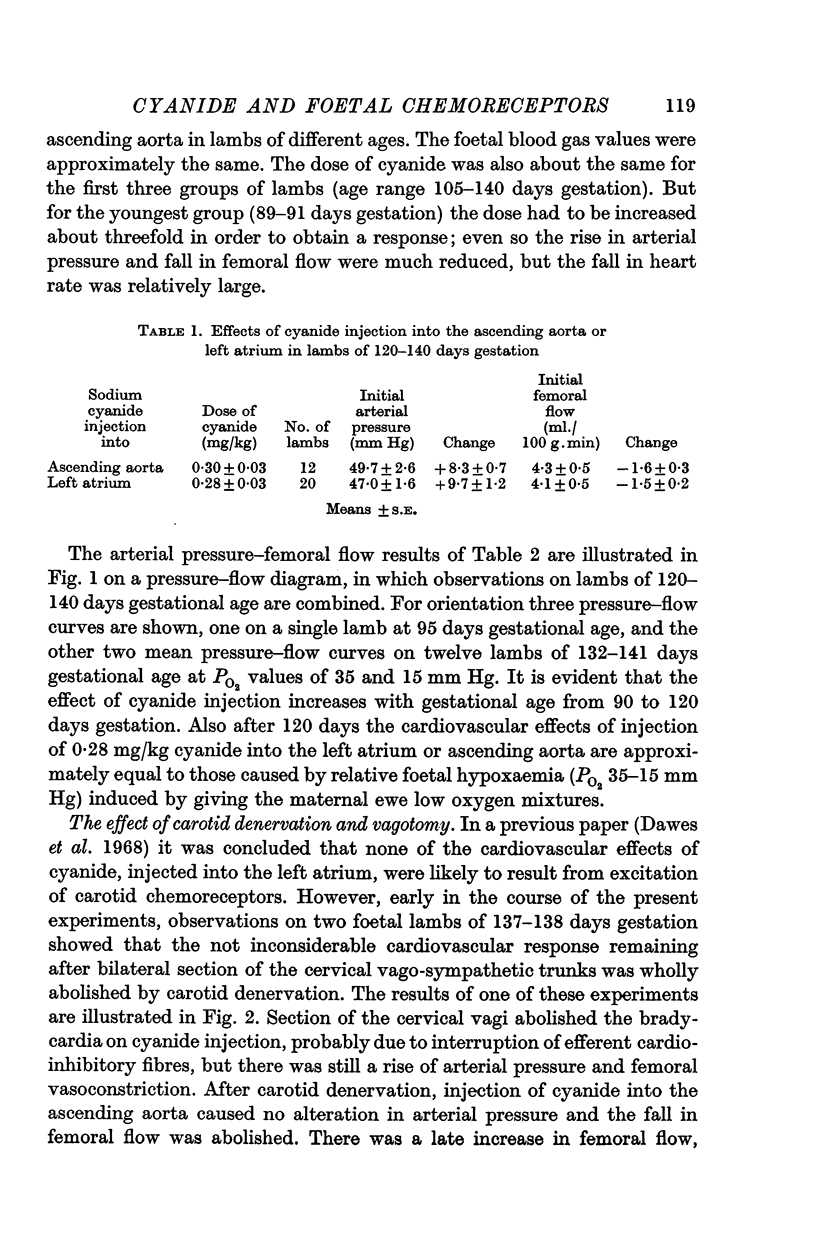
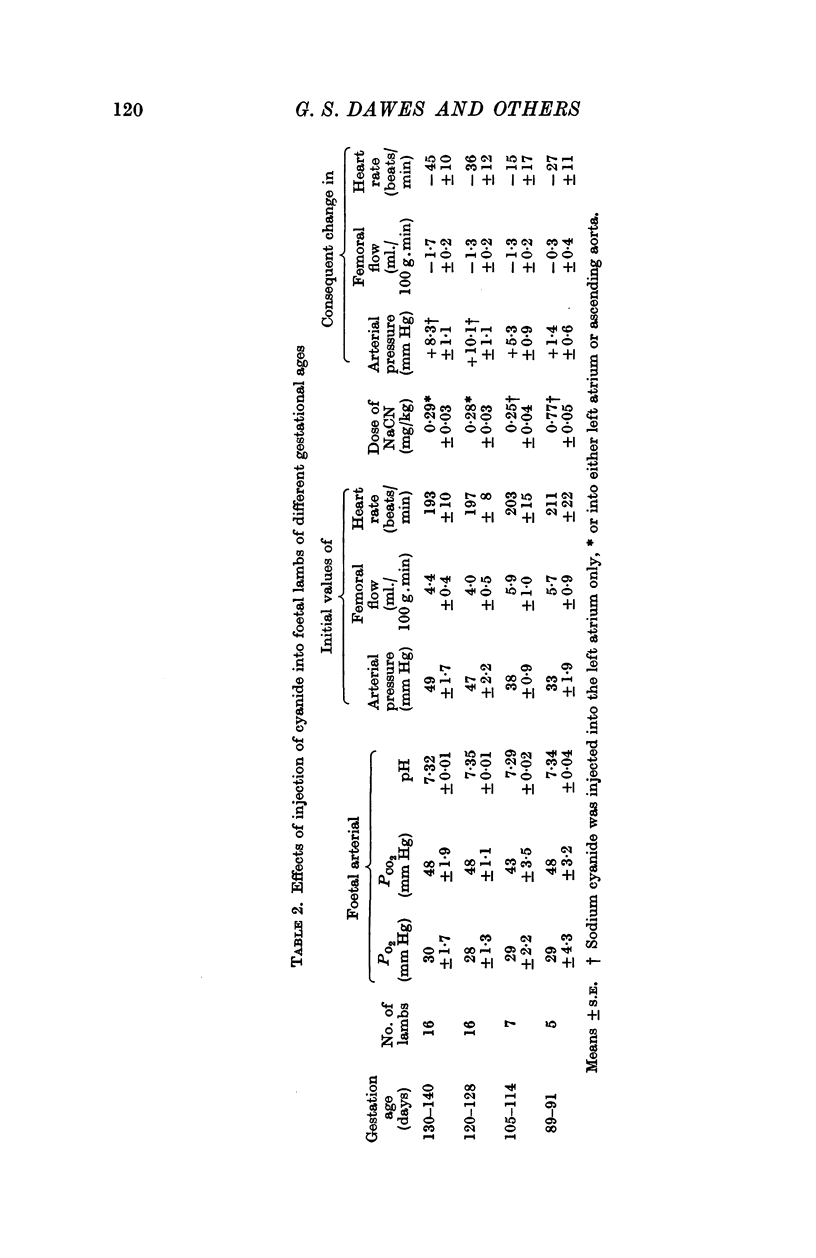

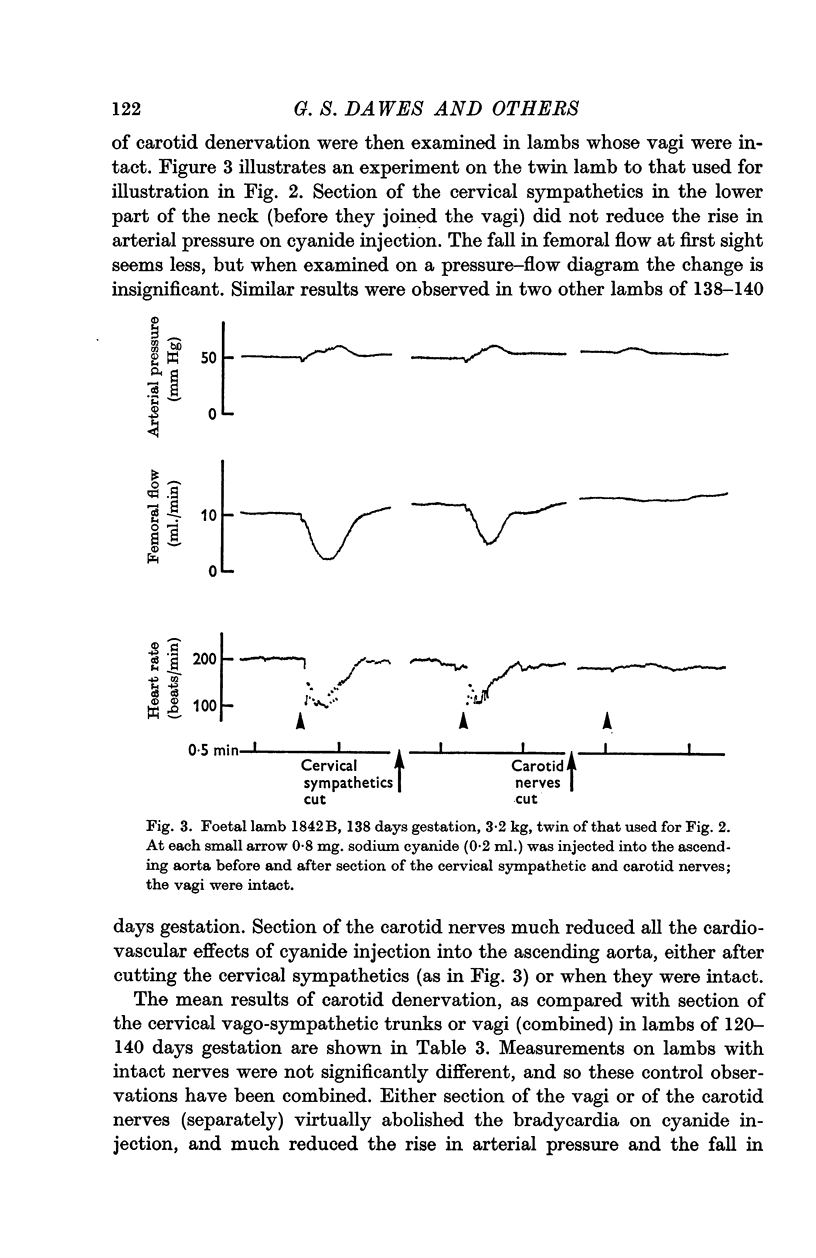


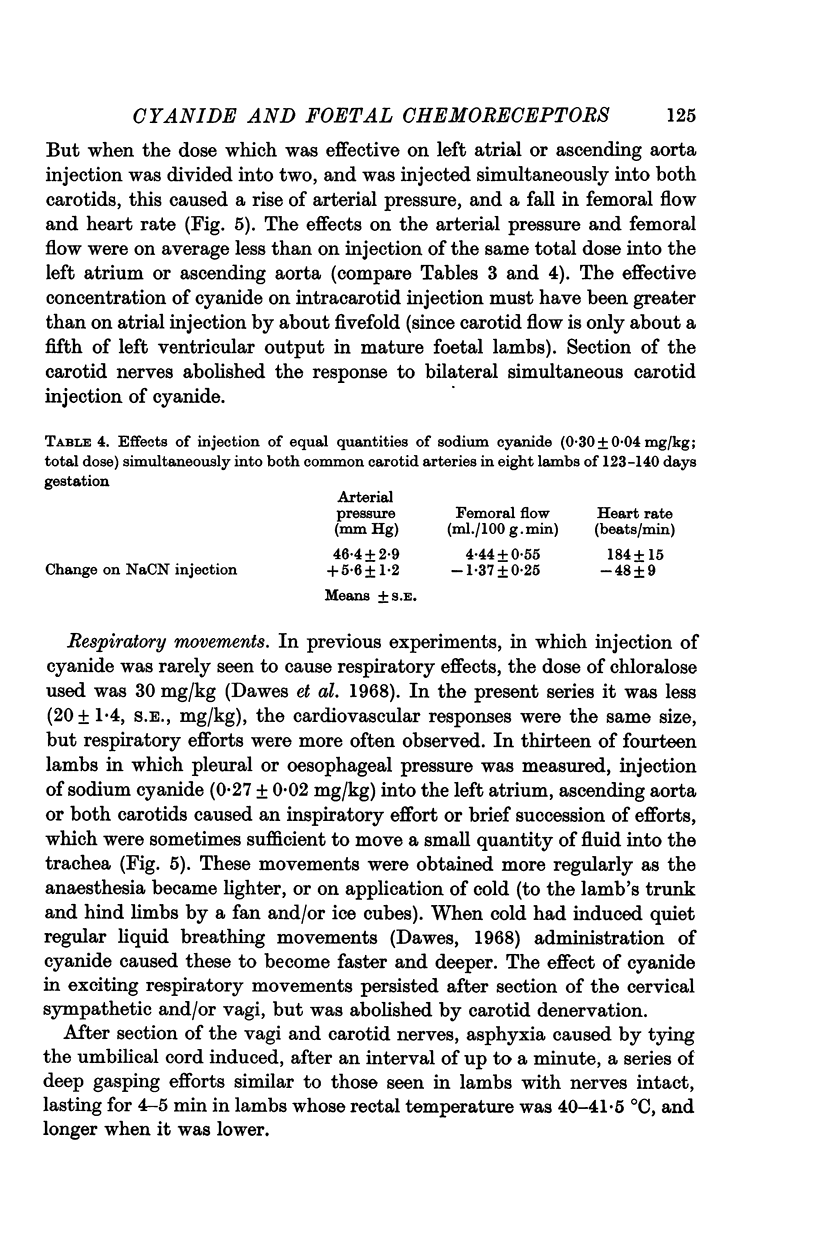
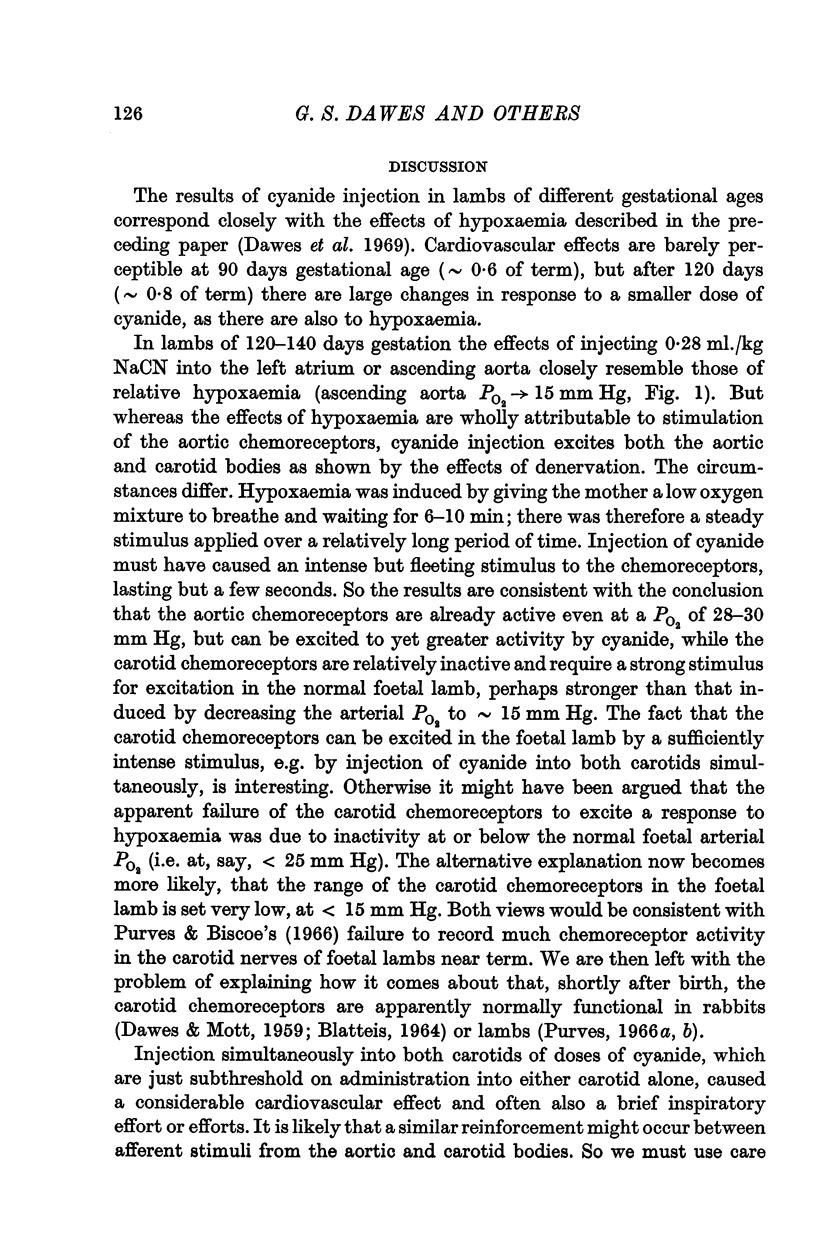

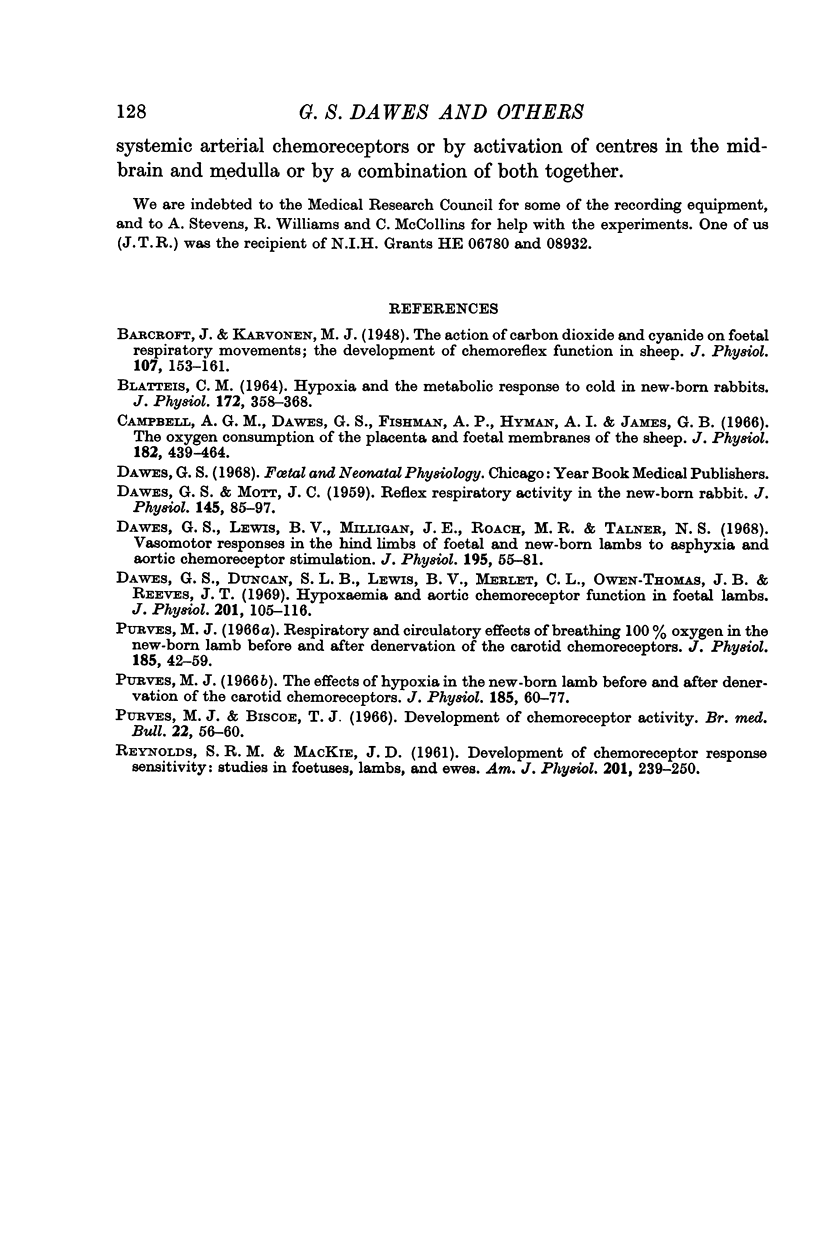
Selected References
These references are in PubMed. This may not be the complete list of references from this article.
- BLATTEIS C. M. HYPOXIA AND THE METABOLIC RESPONSE TO COLD IN NEW-BORN RABBITS. J Physiol. 1964 Aug;172:358–368. doi: 10.1113/jphysiol.1964.sp007424. [DOI] [PMC free article] [PubMed] [Google Scholar]
- Barcroft J., Karvonen M. J. The action of carbon dioxide and cyanide on foetal respiratory movements; the development of chemoreflex function in sheep. J Physiol. 1948 Mar 15;107(2):153–161. doi: 10.1113/jphysiol.1948.sp004258. [DOI] [PMC free article] [PubMed] [Google Scholar]
- Campbell A. G., Dawes G. S., Fishman A. P., Hyman A. I., James G. B. The oxygen consumption of the placenta and foetal membranes in the sheep. J Physiol. 1966 Jan;182(2):439–464. doi: 10.1113/jphysiol.1966.sp007831. [DOI] [PMC free article] [PubMed] [Google Scholar]
- DAWES G. S., MOTT J. C. Reflex respiratory activity in the new-born rabbit. J Physiol. 1959 Jan 28;145(1):85–97. doi: 10.1113/jphysiol.1959.sp006129. [DOI] [PMC free article] [PubMed] [Google Scholar]
- Dawes G. S., Duncan S. L., Lewis B. V., Merlet C. L., Owen-Thomas J. B., Reeves J. T. Hypoxaemia and aortic chemoreceptor function in foetal lambs. J Physiol. 1969 Mar;201(1):105–116. doi: 10.1113/jphysiol.1969.sp008745. [DOI] [PMC free article] [PubMed] [Google Scholar]
- Dawes G. S., Lewis B. V., Milligan J. E., Roach M. R., Talner N. S. Vasomotor responses in the hind limbs of foetal and new-born lambs to asphyxia and aortic chemoreceptor stimulation. J Physiol. 1968 Mar;195(1):55–81. doi: 10.1113/jphysiol.1968.sp008446. [DOI] [PMC free article] [PubMed] [Google Scholar]
- Purves M. J., Biscoe T. J. Development of chemoreceptor activity. Br Med Bull. 1966 Jan;22(1):56–60. doi: 10.1093/oxfordjournals.bmb.a070438. [DOI] [PubMed] [Google Scholar]
- Purves M. J. Respiratory and circulatory effects of breathing 100 per cent oxygen in the new-born lamb before and after denervation of the carotid chemoreceptors. J Physiol. 1966 Jul;185(1):42–59. doi: 10.1113/jphysiol.1966.sp007971. [DOI] [PMC free article] [PubMed] [Google Scholar]
- REYNOLDS S. R., MACKIE J. D. Development of chemoreceptor response sensitivity: studies in fetuses, lambs, and ewes. Am J Physiol. 1961 Aug;201:239–250. doi: 10.1152/ajplegacy.1961.201.2.239. [DOI] [PubMed] [Google Scholar]


